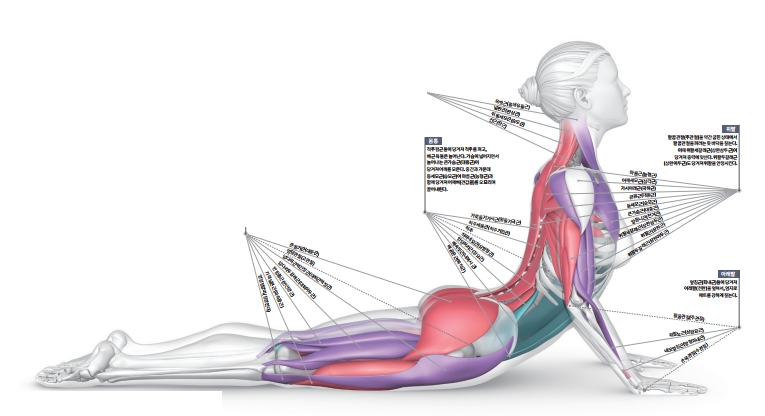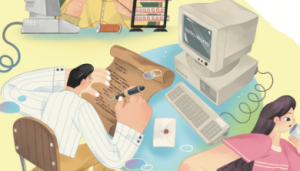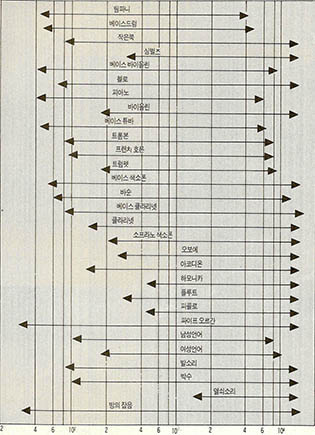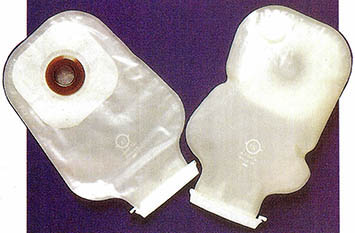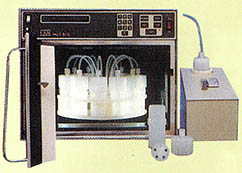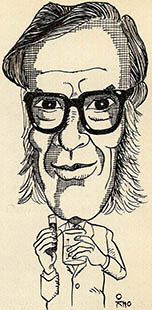
16세기 만에 처음으로 책의 겉모습에 있어서 혁명의 시기가 도래했다. 여러분은 그 변화가 책의 겉모습에서이지 책 그 자체의 변화가 아님을 명심해야 한다. 책에 대한 본질적인 관념은 5천년동안 변화하지 않을 것이다. 어느 정도 휴대가 가능하고 다소간 영구적인 형태로서, 손에서 손으로 전달될수 있는 쓰여진 단어를 대체할 수 있는 것은 아무것도 없을 것이다.
"그림 하나는 단어 천 개의 가치가 있다"는 말을 들어보았겠지만 이 말을 믿지 말길 바란다. 가끔은 그것이 사실일 수도 있다. 즉 문자를 읽지 못하는 사람의 경우 혹은 여러분이 복잡한 물체의 물리적인 외양을 기술하려고 노력할 때가 그렇다. 그렇지만 일반적이지는 않다. 햄릿의 독백은 2백60개의 단어로 되어 있다. 당신은 그 대사를 그린 그림 하나에서, 혹은 2백60개의 그림에서 그러한 감흥을 얻을 수 있을까?
그렇지 않다. 단어로서만 그것을 얻을 수 있다. 그러나 단어가 표시되는 형태는 변화할 수 있고 또 변화해 왔다. 글로 쓰여진 문서들 중에서 가장 오래된 것은 (세금 목록들, 기록들, 편지들 또한 결국 계산서 혹은 이야기들도 충분히 '책'으로 간주될 수 있다) 약 5천 년 전에 수메리아인들에 의해서 만들어진 것이다. 글자를 나타내는 부호들이 진흙덩어리에 첨필(尖筆)로 새겨졌고, 그리고나서 그 결과물은 구워져서 일종의 인조석으로 만들어졌다. 세계에서 가장 오래된 남아 있는 서사시는 '길가메쉬'로 그러한 형태를 띠고 있다.
딱딱한 표현 위에 글을 쓰는 다른 형태들은(밀랍이 칠해진 판 위에 날카로운 도구로, 석판 조각위에 석필로) 유용할 지도 모른다. 그러나 책의 영구성은 가지지 못한다. 돌기둥 위에 새기는 것은 영구적이지만 책의 휴대가능성을 가지지 못한다.
고대 이집트인들이 처음으로 얇고 연한 표면 위에 낱말들을 파피루스(갈대의 속)위에 잉크를 사용하여 썼다. 비록 잉크들과 글자를 쓰는 표면들은 다같이 개선되어 왔지만, 그러한 원리는 그 이래로 계속 사용되어 왔다. 이보다 앞선 시기에는 필경사들이 양피지나 나무 껍질위에 썼다.
오늘날 종이는 이전의 어떤 파피루스보다 더 값싸고 풍부하게 구할 수 있다.
이집트인들은 잉크를 가느다란 붓으로 찍어썼으나 그 이래로 깃털의 대, 강철펜, 만년필, 볼펜 등이 사용되어 왔다.
그러나 이것은 모두 '종이 위의 잉크'라는 일반적 항목에 속한다.
원래 파피루스의 여러 장들은 서로의 끝과 끝이 풀로 칠해져서, 단단하게 감긴 나선형의 길고 연속적인 한장으로 되었다.
그 당시에는 상당히 긴 책 한 권이 손에 간편하게 들어갔다. 이것은 한손으로는 편치고 다른 손으로는 감음으로써 읽을 수 있어, 보고 있는 것은 단 한 장인 셈이다. 볼륨 이란 낱말은 라틴어 '감다'에서 유래하고 옛날 파피루스의 두루마리로 거슬러 올라 간다.
그렇지만 4세기에 '코덱스'-성경책의 사본-가 출현했다. 이것에는 파피루스(혹은 양피지 혹은 종이)의 낱장들이 나머지 것들의 위에 하나씩 쌓여지고 한 쪽 끝에 다같이 풀칠이 되었다. 그것이 오늘날 우리가 아는 책의 모습이다. 코덱스는 두루마리보다 훨씬 편리하다. 많은 페이지들이 한 번에 넘겨질 수 있어서 코덱스는 편리함의 상실없이도 두루마리보다 훨씬 크게 될수 있다. 또한 한 장의 양쪽 면이 코덱스에 사용될 수 있다.
물론 모든 책들이 손으로 쓰여질 수 밖에 없는 한, 출판될 수 있었던 책들의 수자는 작았고, 특별한 책 한 권의 사본의 수자는 더욱 작았다. 그 결과 고대와 중세의 거의 모든 책들이 잃어버리거나 영원히 사라졌다. 그러나 1400년대에 움질일 수 있는 인쇄활자를 이용한 인쇄가 쓰임에 따라 책들은 크게 늘었다. 인쇄 기술이 점점 더 발전함에 따라, 개개의 책들의 복사판들을 재빨리 수 백만 부나 생산하는 것이 가능하게 되었다.
그러나 전자 시대에 살고 있는 우리는 컴퓨터 마이크로칩의 미소한 면적에 단어들을 짜 넣을 수 있다. 책 한권 전체가, 심지어 성경만큼 큰 책까지도 크레딧 카드 하나의 크기로 압축할 수 있다. 이러한 종류의 일이 오스트렐리아에 있는 한 회사에 의해 벌써 실현되었다.
자연적으로, 이러한 압축된 전자책은 그 책의 단어들이 표시될 수 있는 화면을 포함하는 장치가 없이는 읽혀질 수가 없다. 이것은 페이지 사이를 앞으로 뒤로 움직이고, 특별한 한 페이지를 재빨리 찾는 등등의 조종 장치를 갖추고 있어야 한다. 이러한 장치도 역시 존재하고 대략 보통 책 하나의 크기이다.
이러한 판독기는 몇 주의 읽을거리를 나타내는 카드가 한 다스 들어 있는 작은 상자와 함께 쉽게 휴대할 수 있다. 이러한 것들이 마침내 시장에 나올때에, 그것들은 의심할 여지없이 보통 책들보다 상당히 비쌀 것이지만, 그 가격은 시간과 더불어 떨어질 것이다. 게다가 거대한 도서관 하나가 꽤 작은 책꽂이 하나에 들어갈 수 있을 것이다.
판독 장치는 동력이 있어야만 한다. 그러나 작은 핵전지는 잦은 이용에도 몇 년 동안이나 지속될 수 있을 것이다. 그러나 컴퓨터 책들은 눈의 피로의 새로운 근원이 될 것인가? 아마 그렇지 않을 것이다.
결국, 컴퓨터 화면의 백열광은 순응되고 부드러워지게 될 것이다.
전자책은 두루마리와 유사점이 많지 않을 것이다. 여러분은 이것을 펼칠 수가 없다. 혹은 페이지를 쭉 훑어 볼 수도 없다. 그러나 결코 책의 모서리가 접혀지는 일은 없을 것이다. 게다가 이것은 여전히 책일 것이다.
The time has come for a Revolution in the appearance of the book, the first in 16centuries.
Mind you, the change will be in the appearance of the book, not in the book itself. The essential idea of a book hasn't changed in five millennia and won't change in the foreseeable future. Nothing can substitute for the written word in some portable, more of less permanent form, that can be transferred from hand to hand.
You may have heard it said that "A picture is worth a thousand words," but don't you believe it. It may be true on occasion - for someone who is illiterate, or when you are trying to describe the physical appearance of a complicated object - but not generally. Hamlet's soliloquy contains 260 words. Can you get it across in a picture or, for that mater, in 260 pictures?
No, the word's the thing, but the form in which the word is presented can change and has changed. The oldest written documents(tax lists, records, letters, and, eventually, accounts or tales long enough to be considered "books")were produced some 5,000 years ago by the Sumerians. The writing symbols were carved into lumps of clay with a stylus and the result was then baked into an artificial stone. The world's oldest surviving epic, that of Gilgamesh, appeared in that form.
Other types of writing on hand surfaces(a sharp instrument on a waxed tablet, chalk on a piece of slate) may be useful, but don't have the permanence of books. Carvings on stone columns are permanent, but don't have the portability of books.
The ancient Egyptians were the first to write words on a thin flexible surface, using ink on papyrus (the pith of a reed). That principle has been used ever since, though both inks and writing surfaces have been improved. In earlier times, scribes wrote on parchment or tree bark. Today, paper is available more cheaply than papyrus ever was and is in more plentiful supply. The Egyptians applied ink with fine brushes, but since then feather quills, steel pens, fountain pens, ball-point pens and so on have been used - but it all comes under the general heading of ink-on-paper.
Originally, sheets of papyrus were pasted to each other, side by side, into a long continuous sheet that was rolled up into a tight spiral. A fairly long book could then be conveniently held in the hand. It could be read by unrolling it with one hand and rolling it with the other, leaving a single sheet in view. The word "volume" comes from the Latin word "to roll" and harks back to the old roll of papyrus.
By the 4th Century, however, the "codex" made its appearance. In this, the separate sheets of papyrus (or parchment of paper) are piled one on top of the other and pasted together at one end. That gave us the kind of books we know today. The codex is much handier than the roll. Many pages can be turned at once, so that a codex can be much larger than a roll without loss of convenience. In addition, both sides of the leaves con be used in a codex.
Of course, as long as every book had to be handwritten, the number of books that could be produced was small, and the number of copies of a particular book even smaller. Consequently most ancient and medieval books are lost and forever gone. In the 1400s, however, printing with movable type came into use and books multiplied. With further advances in the technique of printing it has become possible to quickly produce copies of individual books in the millions.
But we are in the electronic age, and we can squeeze words into tiny areas of computer microchips. An entire books, even one as large as the Bible, can be compressed into the size of a credit card. This sort of thing has already been done by a company in Australia. Naturally, such a compressed electronic book cannot be read without a device containing a screen on which the words of the book can be displayed. It has to have controls to move forward and backward between the pages, to find a particular page quickly, and so on. Such a device also exists and is roughly the size of a ordinary book.
Such a scanner can be easily carried, along with a small box of a dozen cards that will represent several weeks of reading. When such things finally come on the market, they will undoubtedly be considerably more expensive than ordinary books, but the price should come down with time. In addition, a huge small bookcase.
The scanning device must be powered, but small nuclear batteries could last through years of frequent use. But will books on computer become a new source of eyestrain? Probably not - after all, the computer screen's glow can be adjusted and softened.








